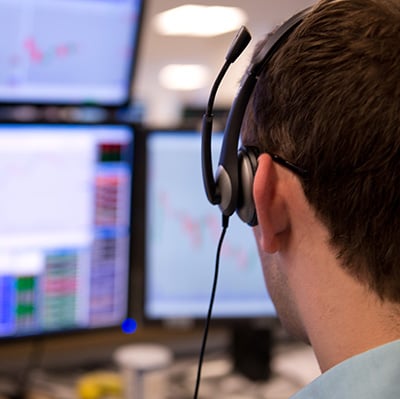Recently I sat through an excellent presentation about trading psychology. One thing that I learned about the best of the best traders is that their most common trait is something called “process”. Process is just another name for routine. It took me a very long time to realize how important this one concept is for the developing trader. The main lesson to take away from this is that these routines are what drive your trading plan.
It all makes so much sense when explained to me in this context. This concept is all around us. For example, I know of grade school teachers who use routines not only to lead children through their respective curriculums, but to also teach them how to function as people. Dance instructors create short routines and build on them in order to train a group for a specific choreography. Football teams from PAL to Pro run their players through routines to get them in psychical shape and to get them so familiar with the plays that they don’t have to think when faced with a stressful situation in a game. If overwhelming evidence suggests routines are good for us, then why would we not incorporate this concept into our trading?
In trading, routines can be utilized for many different aspects of your trading plan. For example, you should have a performance evaluation routine. This begins by selecting a day and time, like Friday after the close and reviewing trades that were taken during the week. Now when I refer to reviewing trades, I am not talking about pulling up an account statement and staring at numbers and matching them to the charts. Reviewing trades means you go back to the printouts of the charts that you made at the time of entry and exit along with the notes on your charts for winners and losers. This is all part of the routine. What? You don’t print out your charts? No reason to? And you expect to improve? One likely reason why you don’t employ such a routine is because you don’t have a well defined methodology to guide you.
Other areas where routines can be employed are trade selection, validation and position sizing. For example, when we are validating a trade, we compare the market information against a checklist of items that will guide our decisions through a framework of choices that have been proven to improve our performance over time.
Remember, the best of the best employ routines. How do you expect to compete without such a well defined structure? Without a perspective and a framework, you will most likely be a victim of overreacting markets. You will be distracted by every piece of irrelevant information that hits you over the head. And the majority of information you are exposed to is irrelevant. Either way, you can begin building your routines now by starting with evaluating your trades in a more detailed way. You can start building your playbook the same way the traders at SMB are expected to do. At least there you will have a point of reference and have something to compare to for when you begin learning a methodology that imposes more structure.



